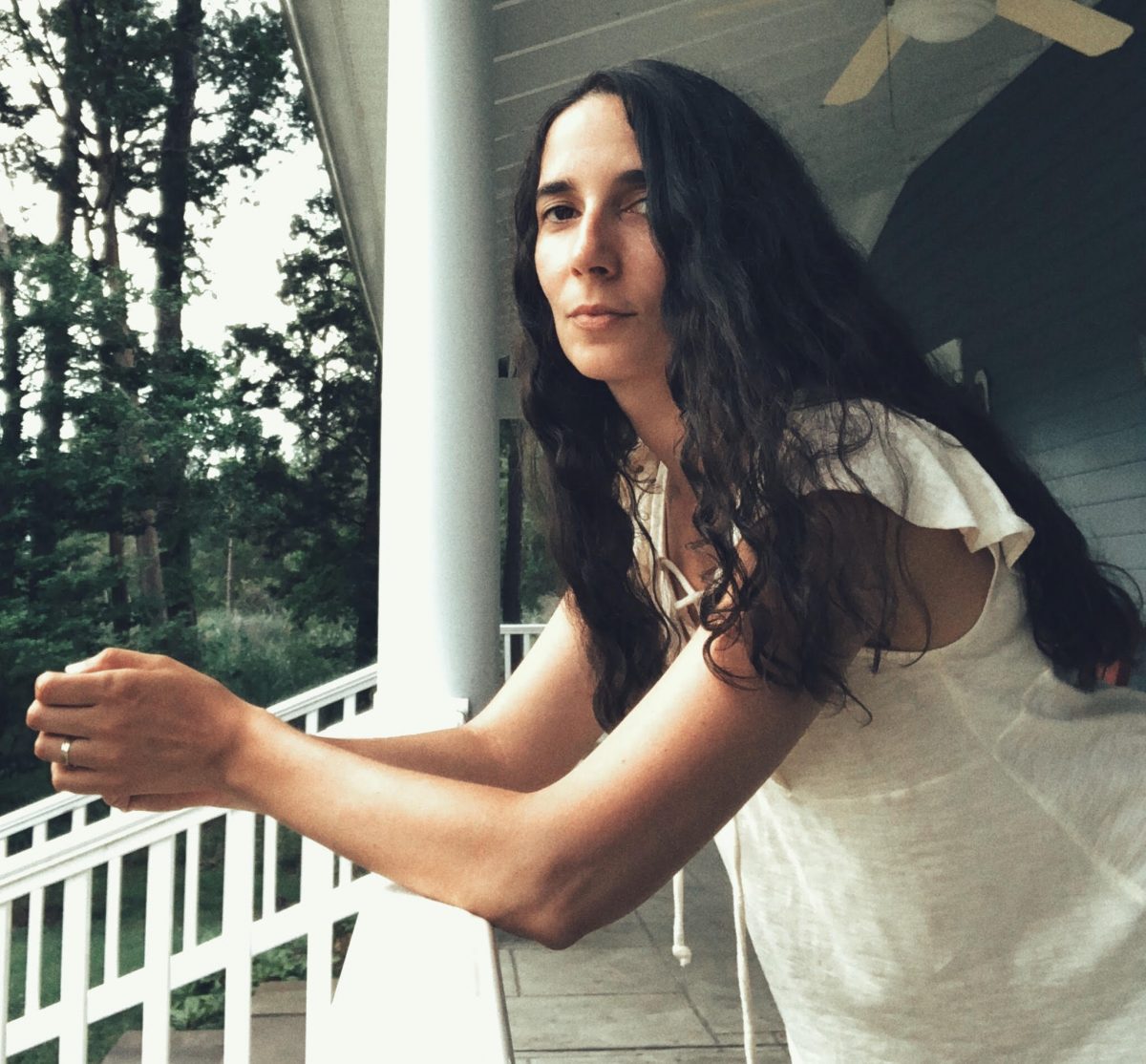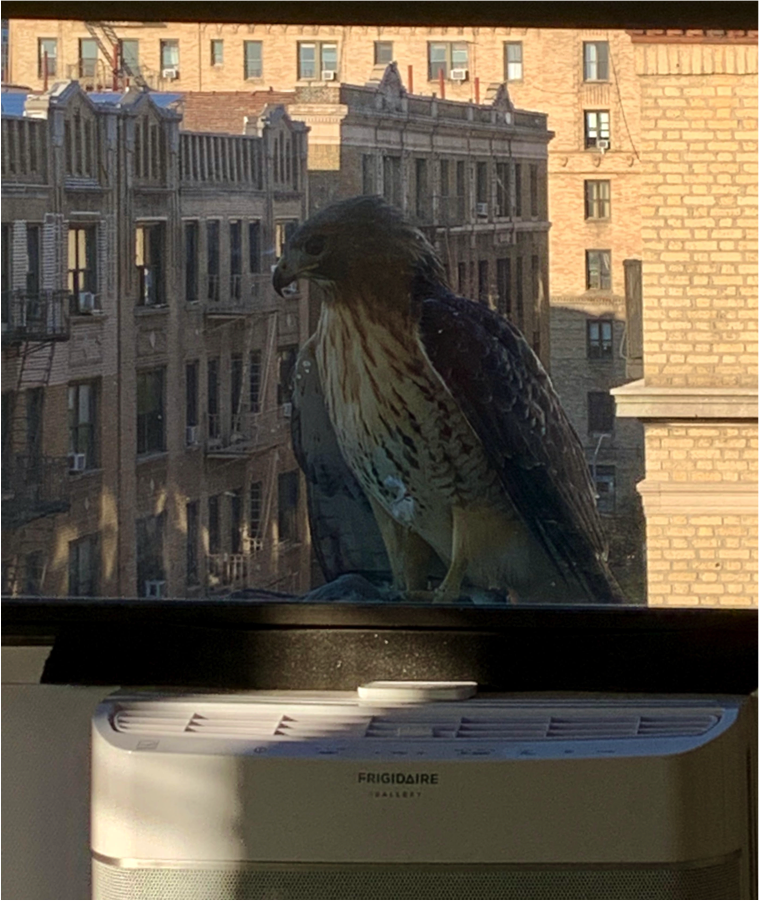An essay for the #ClimateVisionaries Artists’ Project for Greenpeace
Now, I am frightened all the time, by a larger predator so incorporated in my existence that it makes me complicit in my own predation.

Red in Tooth and Claw
It is a strange feeling, as an urban dweller, to be watched by birds. My family lives in Washington Heights, at the highest point of elevation in Manhattan, rife with raptors. Falcons, hawks. Top predators. They eat the rats and mice that eat our garbage. People with little dogs are frightened of them. When I was a young mother, pushing first one baby and then the next in the stroller through this or that park, so was I, a little. The birds are that big, that unnerving, that otherworldly and fierce. Now, I am frightened all the time, by a larger predator so incorporated in my existence that it makes me complicit in my own predation.

Recently, we moved from the third floor of our prewar mid-rise apartment building to the sixth and topmost floor, a corner apartment. It affords a view of the George Washington Bridge, a wedge of Hudson River, and the Palisades across the water on the Jersey side. Periodically, brown smoke belches from the smokestacks of the neighboring rooftops, burn-off from the heating oil in the basement boilers, a depressing reminder of our addiction to fossil fuel. But most of all, the windows are filled with sky and the writing of the birds who fly across it. Usually, they are pigeons. They ornament the rooflines, hunched fatly beneath the parapets in tidy rows. I admit that it thrills me to see them hunted. When the red-tail enters the frame, the sky is suddenly awake.
I woke from a nap to find her there, watching me from the perch of the air conditioner, with a pigeon in her yellow talons. An enormous, round-shouldered, red-tailed hawk. You could see the dinosaur in her. A red entrail hung from her beak. We stared into each others’ eyes for a small eternity, until the dirty window glass disappeared and I had transcended into the “more than human” world. Then my husband walked in, yammering banalities. I shushed him, harshly, and he understood. It’s a rare treat in the city, to be so proximate to wildlife. He snapped this picture with his phone and drew closer to steal another.
Startled, the raptor became giant, filling the entire window with her outrageous wingspan, and in an instant, was gone, a blizzard of feathers in her wake, a brushstroke of blood on the perch. Returned to my body, I felt uncertain of what just went down. The awful findings of that study had recently broken—a third of North American birds have vanished in my lifetime. The proverbial canaries in our collective coal mine. Though red-tailed hawks aren’t on the endangered species list, and some in fact, seem to be adapting to the warming climate by skipping migration south for the winter, it is still the case that we are in the midst of the sixth extinction, and I felt this particular hawk had been trying to tell me something urgent. Perhaps that this is what we stand to lose. The warm bed. The bridge. The safety of babies. Peacefulness. All of it, under threat, unless we adapt. Or else, I was anthropomorphizing. “She probably just thought I wanted to steal her food,” I guessed. “No,” my husband disagreed. “There is a wild natural power in this world that she recognized in you, just as you recognized it in her.”
—
As we begin this critical new year in the fight against climate change, Greenpeace is giving over space on our channels to authors and artists working within the climate crisis. Acclaimed author Lauren Groff prompted artists and thinkers to write essays and art about climate change for us, and so every day this month we’ll have a new piece from that project that addresses, in some form, what it means to create in the midst of this crisis. The forces fueling climate change have the most powerful networks in history pumping out their devastating propaganda at unimaginable scale. It’s going to take everything we have from all of us – imagination equal to the task – to create the climate we’ll need to stop the crisis.
We need these voices and these visions, but they won’t be enough. We need you, too. We encourage you to check back on the Climate Visionaries Artists’ Project every day to see what’s new, and to join the conversation by sharing your work on Twitter, Facebook, and Instagram and tagging it #ClimateVisionaries.
